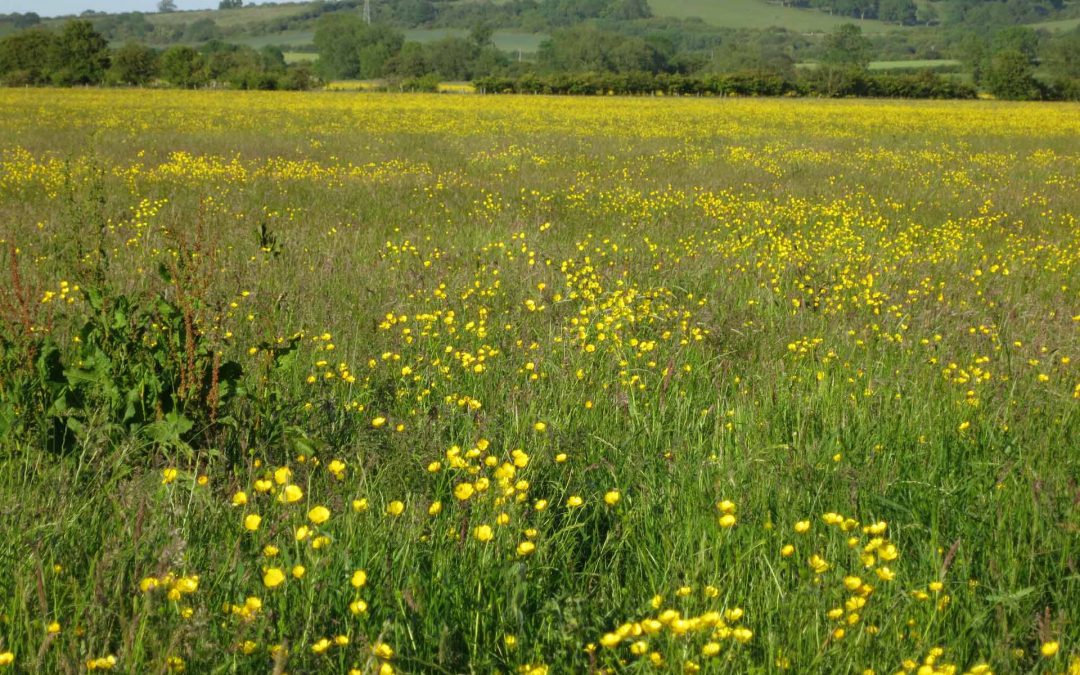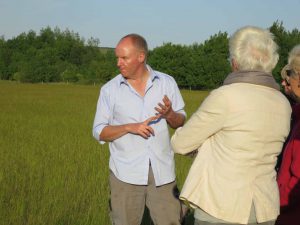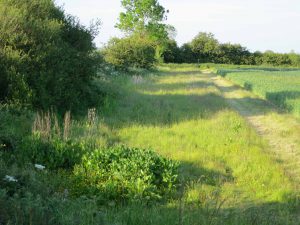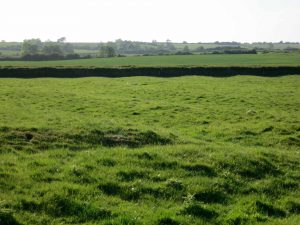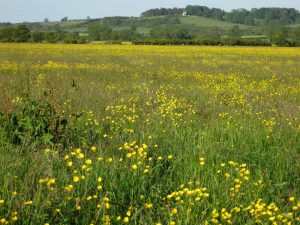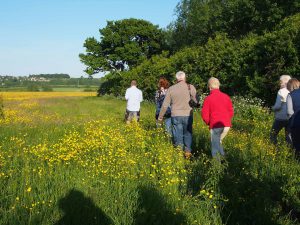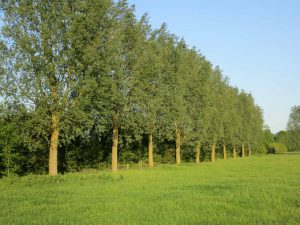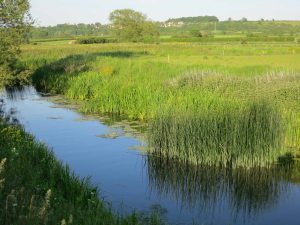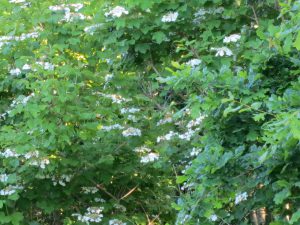On a warm sunny evening, 9 members and 3 non members went on an informative Farm Walk at Caldicott, hosted by Andrew Brown – farmer and environmentalist.
Andrew has a 252 ha farm, cropping is 60{731e32f8b7907d00e7e184d411f3e6ecf0053df2d05e2447aee1c08715ef822f} arable and 40{731e32f8b7907d00e7e184d411f3e6ecf0053df2d05e2447aee1c08715ef822f} permanent pasture – grazed by sheep. The farm is in the governments Higher Level Environmental Scheme, 23ha are taken out of production and turned into field margins planted with a mixture of species to floristically enhance and increase sources of pollen and nectar.
Bat and Barn Owl boxes have been erected around the farm.
The arable part of the farm is in a Wheat – Beans – Wheat – oilseed rape rotation.
Andrew introduced the evening with a talk and film on climate change and environmental pollution which was followed by refreshments.
We then proceeded to walk south, starting with the cropped areas where Andrew explain the need for grass weed control to maintain yields of Wheat.
After the arable field we arrived in a pasture, yellow with buttercups and striped by ancient ridge and furrow following the continual use of Oxen to plough the field in bye-gone years.
We walked passed high hedges which are cut every 3 years, producing an open habitat ideal for nesting birds while reduce predation by corvids.
A red kite flew over and skylarks were singing as we passed over an old railway line. Next we came to an area that fringes the river Welland, this is subject to flooding and is kept in permanent pasture.
On the fields edge were cricket bat Willows which are slow growing, producing dense wood suitable for cricket bats.
Yellow water lilies were showing as we strolled passed the river Welland.
A singing Song Thrush welcomed us to the Community Wood that Andrew planted in 2004, this has a variety of species including Oak, Aspen and Apple. A Willow Warbler showed off it’s descending song as if to demonstrate what a haven for wildlife this wood has become.
In the next field we see an ancient oak tree that was hit by an Avro Lancaster in WW2. This was the result of an engine fire and poor visibility along the Welland on foggy mornings in spring and autumn.
More skylarks were singing as we wended our way back to the farmyard. Time for some more questions in the barn to end a most enjoyable and informative evening.
